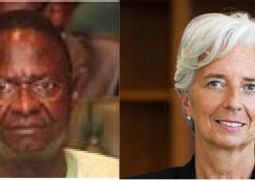To repeat, on the one hand, the limited truth is true in reality (it is not a construct and creation of the human mind as asserted by skeptics, relativists, and pluralists), and this leads to certainty on the cognitive plane and resolve on the volitional level. With regards to the madhhab that any believer might be following, it brings about a surety and determination that is characteristic of those that worship God. On the other hand, the limited truth is limited due to man’s limitation of knowledge, and upon introspection, he knows that he does not know the total Truth, and this leads to a sacred perplexity (tahayyur) on the notice plane and to humility on the plane of the will. Such awareness ensures that the follower of a madhhab does not absolutize it and take it to be the Truth. But if he were to put humility aside and feign to own the “truth,” then the ingrained sectarianism that would ensure would initially set him at odds with other sects, but eventually it would put him in conflict with other followers of his own sect as he would see their version or reading of the sect to be “wrong” precisely because it is against his own understanding and the one that he “possesses.”
The allure of this spirit of “possessing” the truth is so great that it is ubiquitously found in all religious movements-especially those that claim to be the defenders of the true doctrine. Such claims are more predominant amongst the ideologues, activists, and the politicians, as their predilection for the pole of action over contemplation, or for the level of the rational over the properly intellectual, does not give them the necessary depth of understanding to have an awareness of the truth that is not in their possession (ladayhim) and that is principally with God (‘ind Allah). The recent claims of a government official in some countries to the ascendancy of the “
On a positive note, there are in the Ummah more balanced voices of greater intellectuality. The most recent of these is the historic fatwa of the Leader of the Islamic Republic of Iran, Ayatullah al-Uzma Sayyid ‘Ali Khamenei, in which he decreed:
[Even] the depreciation of the notables of our Sunni brothers is forbidden (haram), to say nothing of the denunciation of the wife of the Prophet (the blessing of Allah upon him and his Progeny) so as to violate her honour-this is rather not even possible in respect of the wives of the prophets [in general] and especially in the case of their maser, the Greatest Messenger (the blessings of Allah upon him and his Progeny).
Now, those sectarians who are sincere in their defense of their limited version of truth bring forth from traditional sources proofs for their perspective. On one level, it is easy to respond to them by saying that they are only seeing one side of the story and are not giving due attention to other traditions which oppose and may even abrogate their own proofs. But this though perhaps sufficient for some, would be a superficial response. For while it is true that such individuals are guilty of absolutizing the limited truth that in their possession, the very existence of such traditions which allow them to do so is a matter that is open to questioning. Why do there exist narrations and traditions in the Shia corpus that would be found offensive to Sunnis and vice versa? Is it the case that these traditions have simply been fabricated? Do they, as the sectarians would have us believe, allude to the fact that the other side is totally wrong and that there is only one sect that will be saved, all the others deserving only hellfire? Or can there be another explanation for these polemical traditions?
One possible explanation comes from the mystics of Islam. In their discussions on the beautiful names of Allah, they talk of two different realities which they refer to with the expressions, “the marriage of the two names” and the opposition of names. Latter phrase outlines the necessity of the opposition of certain with others on the plane of manifestation. They stress the fact that this opposition here only highlights the greatness of the unity that prevails on the higher planes. To them the qualitative plenitude of God’s unicity directly implies His rich multiplicity, along with is apparent conflicts and differences.
It is in this light that there can be “necessary antagonisms” amongst the madhahib; for in its attempt to fully manifest its idea and “name”, each madhhab seeks to forge an identity that is separate from the others. The polemics that follow serve to maintain its integrity and allow for the madhhab to display its particular genius. Hence the existence of certain divisive traditions-usually based on historical details and fact-is perhaps the madhhab’s way of keeping the lowest of their adherents within the fold.
However, what kept these traditions from feeding the flames of rampant sectarianism in the past was the existence of higher levels of intellectuality and a living spirituality as embodies in the ‘ulama and the saints of Islam. These accomplished souls made sure that the madhhab was firmly grounded in the doctrines and principles of Islam formally speaking, that it was in continuous communion with the Prophetic presence on the substantial level, and that it was open to spiritual Wayfaring on the essential plane. Of course, those who could reach this last sage were few indeed, but it was they who used the full capacity of their intellect to see the unity that lies beyond the opposition and antagonism in the manifested order, and it is they who would then (re)turn to the people to enjoin them to work towards unity.
You suppose them to be a united body, but their hearts are disunited. That is because they are a lot who do not intellect. (59:14)
Unity is base upon the coming together of the hearts; disunity is their being dispersed. Disunity is a sign of an absence of true intellectuality. Imam Ail (‘a), who was the very embodiment of principle intellectuality after the Prophet (s), wholeheartedly practiced the Quranic imperative unity and avoided creating disunity at all costs. Ayatullah Jawadi Amuli writes:
Hadrat Amir al-Muminin (a) was foremost in not being tainted by any types of sectarianism nor sullied by any kind of internecine discoed; his way was always in line with universal agreement [and general consent].
Hence, in a letter to Abu Musa Ash’ari. Imam ‘Ali (a) wrote:
There is not a man-heed this-more anxious to preserve the integrity and union of the ummah of Muhammad (s) than I. I seek for this [nothing but] a goodly reward and a noble end [with Allah].
The Imam warned of the dangers of disunity in this way:
Beware of subjecting God’s religion to vagaries [and whims]. Indeed unity for the truth, though dislike by you, is better than divisiveness for a falsehood that you like; and indeed Allah, glory be to Him, has given no good to anyone on account of division and disunity-neither in the past nor in the future.
Hence; when we give our own “colour” (talawwun) to religion and limit it by forcing it to confine to the limits of our human imperfections and nafsani predilections, we open he way to a false happiness or smugness with regards to the product of our caprice. We label this created sect and contrived faction with the word “religion,” not realizing that in doing so we effectively put an end to the true nature of religion and stifle its ability to act as an open-ended vehicle of transformation (an upaya, as the “upper” end of religion must necessarily involve the unlimited, infinite, and mysterious). This caricature of religion, being thus delimited and cut off vertically from its infinite source, the Real, is also cut of horizontally from other such caricatures, leading to contrariety and opposition with them.
Such division and divisiveness is liked by the lower soul as it is “happy” with its “own” creation and wishes for it to supersede all others.
Bu they fragmented their religion among themselves, each party exulting in what it had. (23:53).
To be continued




